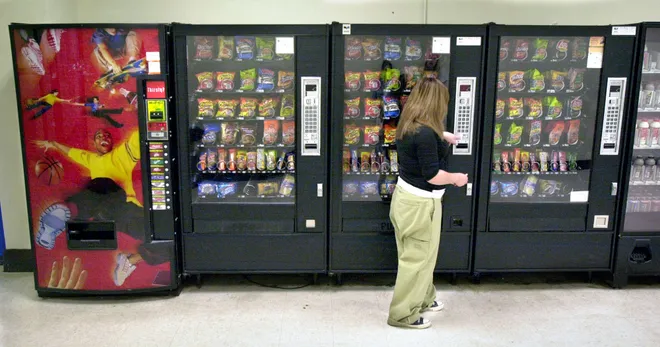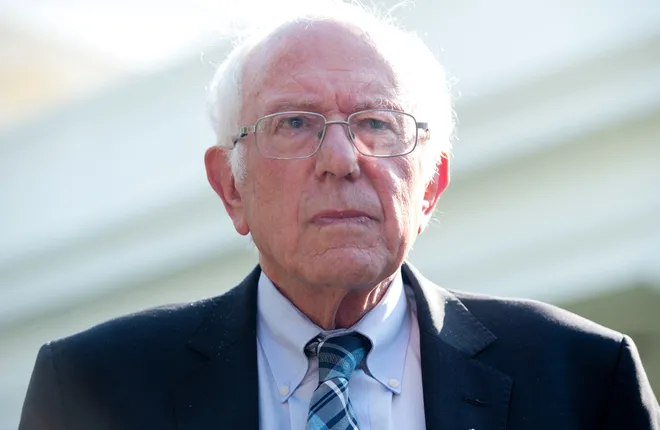Bernie Sanders: We can't allow the food and beverage industry to destroy our kids' health
In America today we have a Type 2 diabetes epidemic. In America today we have an obesity epidemic. They are directly related, and both epidemics are getting worse. As chairman of the U.S. Senate Committee on Health, Education, Labor and Pensions, I intend to do all that I can to address this crisis.
The statistics are staggering. More than 35 million Americans are struggling with Type 2 diabetes – 90% of whom are overweight or obese. Unless we dramatically change course, these numbers will continue to grow exponentially.
Let's be clear: This epidemic is not only endangering the health and well-being of tens of millions of Americans, it is also enormously expensive. According to the American Diabetes Association, the estimated cost of diabetes in the United States was nearly $413 billion last year. That's about 1 in 4 of our health care dollars.
The questions that must be asked are: Why is the number of children in America today who have Type 2 diabetes estimated to skyrocket by nearly 700% over the next four decades? How did it happen that the rate of childhood obesity in America has tripled since the 1970s and has gotten so bad that 1 out of every 5 kids in America and more than 40% of adults are now obese?
The answers to these questions are not complicated.
People with diabetes need more:My son needs insulin to survive. Plans to lower drug costs are welcome, but not enough.
Corporations have advertised us into a diabetes epidemic
For decades, we have allowed large corporations to entice children to eat foods and beverages loaded up with sugar, salt and saturated fat deliberately designed to be overeaten.
The situation has gotten so bad that most of what kids in America eat today consist of unhealthy, ultra-processed foods like sweetened breakfast cereals, sugary soft drinks, chicken tenders, hot dogs, french fries, frozen pizzas and chips that experts have told us lead to a higher risk of Type 2 diabetes. Even food that appears to be healthy like fruit-flavored yogurts and granola bars contains high levels of added sugar.

Alarmingly, according to a recent study published in the British Medical Journal, ultra-processed foods, which Northeastern University’s Network Science Institute says make up an incredible 73% of our nation’s food supply, can be as addictive as alcohol or cigarettes.
While the diabetes and obesity rates in America soar, while we spend hundreds of billions of dollars to treat diabetes, the food and beverage industry spends $14 billion a year on advertising to make many of their unhealthy products irresistible to the American consumer. Even worse, $2 billion is used to directly market food predominantly high in sugar, salt and saturated fat to our children in order to get them hooked on these products at an early age.
According to the Rudd Center for Food Policy and Obesity, children and teens view about 4,000 food and beverage ads on television each year, an average of 10 advertisements each day.
The Center for Science in the Public Interest has found that children who watch Nickelodeon and Nicktoons are exposed to more than 10 unhealthy food and beverage ads every hour.
Last year, for example, Coca-Cola Co. spent $327 million on advertising in the United States alone while it raked in more than $9.5 billion in profits.
Not one of their ads will tell you that drinking one or two cans of Coke a day will increase your chances of getting Type 2 diabetes by 26%.
Nor will their TV ads tell you that a 20-ounce bottle of Coke contains more than 15 teaspoons of sugar – over twice the recommended daily limit for kids.
Start with banning junk food ads for kids
The time is long overdue for us to seriously combat the Type 2 diabetes and obesity epidemic in America. We must have the courage to take on the greed of the food and beverage industry that, every day, is attacking the health and well-being of our children.
And a good place to start would be to ban junk food ads targeted to kids.
This is not a radical idea.
The National Institutes of Health has estimated that if the United States banned fast-food advertising marketed to children, we could cut the childhood obesity rate by up to 18%.
Is your kid struggling with math?They're not being taught the right way.
In the 1980s, Quebec banned junk food advertising to children under 13. Today, the province has the lowest childhood obesity rate in Canada and the highest consumption of fruits and vegetables of any Canadian province.
This summer, the World Health Organization called for countries to substantially reduce the marketing of junk food to children, and Norway announced that it would be banning all food and beverage advertisements to children.
Ireland, Portugal, South Korea, Spain, Taiwan and several other major countries have either seriously restricted or banned junk food ads targeted to children.
In 2021, Mexico banned cartoon characters on food products and now requires warning labels on the front of food products that contain excess sugar, calories, sodium or saturated fat – something that we should also consider.
The food and beverage industry will no doubt do everything it can to protect the status quo and its ability to destroy the health of our kids. It’s not only billions in TV advertising. During the last presidential election cycle, the industry spent a record-breaking $42.5 million on campaign contributions to elect candidates who will protect their interests.
Enough is enough. It’s time we stood up against an industry that puts profits ahead of the health of our children. It’s time that we do all we can to combat the diabetes epidemic.

Bernie Sanders is the senior United States senator from Vermont. He is the chairman for the Committee on Health, Education, Labor and Pensions.
Disclaimer: The copyright of this article belongs to the original author. Reposting this article is solely for the purpose of information dissemination and does not constitute any investment advice. If there is any infringement, please contact us immediately. We will make corrections or deletions as necessary. Thank you.







